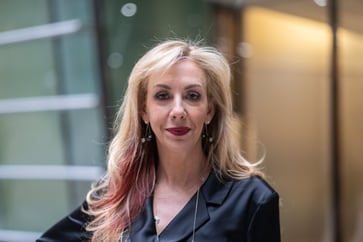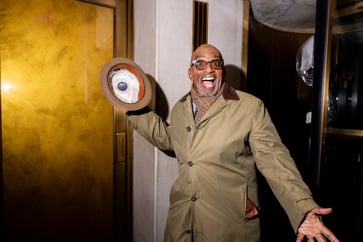Some unconventional economic indicators may hint at a potential recession.

Besides bond and stock markets, there are other indicators that can signal an economic downturn.
There are several unconventional economic indicators that could be useful to monitor, such as the men's underwear index and the hemline index.
Recent developments have led to an increase in concerns about a recession. The combination of high inflation due to the Russia-Ukraine conflict and the Federal Reserve's plans to raise interest rates has caused investors to worry about the slowing of economic growth.
The yield curve inversion in the U.S. government bond market reflects the growing unease among investors, who are selling short-dated Treasurys in favor of longer-dated government debt, causing 2-year bond yields to rise above the 10-year rate.
An inversion in bond yields does not necessarily mean a recession is imminent. This indicator can occur up to two years before an economic downturn.
Economic data, such as employment and consumer spending figures, can act as recession signals. Additionally, market watchers have started using more unusual indicators of economic health.
Skyscraper index
In 1999, British economist Andrew Lawrence created the "skyscraper index," which correlates the construction of the world's tallest structures with the onset of economic crises.
Lawrence stated in a 2012 interview with the Council on Tall Buildings and Urban Habitat that he had examined historical data as far back as the late 1800s and discovered a correlation between the completion of the world's tallest buildings and economic crises.
During the Great Depression, significant construction projects were completed, such as the Chrysler and Empire State buildings in New York.
Lawrence stated that while the completion of skyscrapers marks the end of a building boom, it is not the height of these buildings that poses a problem but rather the concentration of them in a cluster.
The Merdeka 118 tower in Kuala Lumpur, Malaysia, and the Steinway Tower in New York City, USA, were both completed at the end of 2021. The Merdeka 118 tower is the world's second-tallest building, while the Steinway Tower is the skinniest skyscraper in the world and one of the tallest in the Western hemisphere.
Men’s underwear index
For former Federal Reserve Chairman Alan Greenspan, it's the sale of men's underwear.
In 2008, during the global financial crisis, NPR correspondent Robert Krulwich reported that Greenspan had explained to him that underpants were a good indicator of economic hardship because men typically purchase them last.
According to Greenspan, men's underpants sales are typically consistent, but when sales decline, it suggests that men's financial situation is tight and they choose to postpone purchasing new replacements.
Hemline index
In the 1920s, a thesis by Wharton Business School economist George Taylor introduced the "hemline index," which posits that skirt lengths increase during market upturns and decrease during economic downturns.
The economic prosperity of the 1920s and the emergence of knee-length flapper skirts, as well as the appearance of the mini skirt in the 1960s amid stronger financial conditions, have been used to support this theory.
However, there have often been questions raised over its credibility.
The Erasmus School of Economics Econometric Institute in the Netherlands published a study in 2010 that gathered monthly hemline data from 1921 to 2009.
The urban legend is true, but with a three-year time lag, according to the report's authors.
Lipstick index
Amid the economic downturn in 2001, Estee Lauder Chairman Leonard Lauder created the "lipstick index." He posited that women would prioritize small luxuries, such as lipstick, as mood boosters during tough times.
During the Covid-19 pandemic in 2020, the theory that makeup sales would increase wasn't supported by the decline in sales as consumers were restricted to staying at home during lockdowns.
While investors should not blindly trust soft economic indicators, it's important to keep an eye on them, according to Russ Mould, investment research director at AJ Bell, who spoke to CNBC via phone.
When the prices of luxuries such as champagne and art increase at the same time as share prices, share buybacks, mergers and acquisitions, and debt, investors should become more concerned.
He stated that it is a type of bull market, characterized by the belief that good times will last forever, but this behavior cannot sustain itself indefinitely, as it never does.
Some ways to safeguard your savings amid signs of a potential recession include:
make-it
You might also like
- One of the most Googled houses in the world, the Chicago-area house from 'Home Alone,' has just sold for $5.5 million.
- A psychologist claims that TikTok is causing harm to children on an industrial scale.
- I won't be consuming these 6 foods that can accelerate the aging process and shorten my lifespan, as advised by a plastic surgeon with 20 years of experience.
- In order to succeed in 2025, the best advice from a career coach is to be proactive.
- Fourteen colleges provide bachelor's degrees in AI, with only one Ivy League institution among them.



















